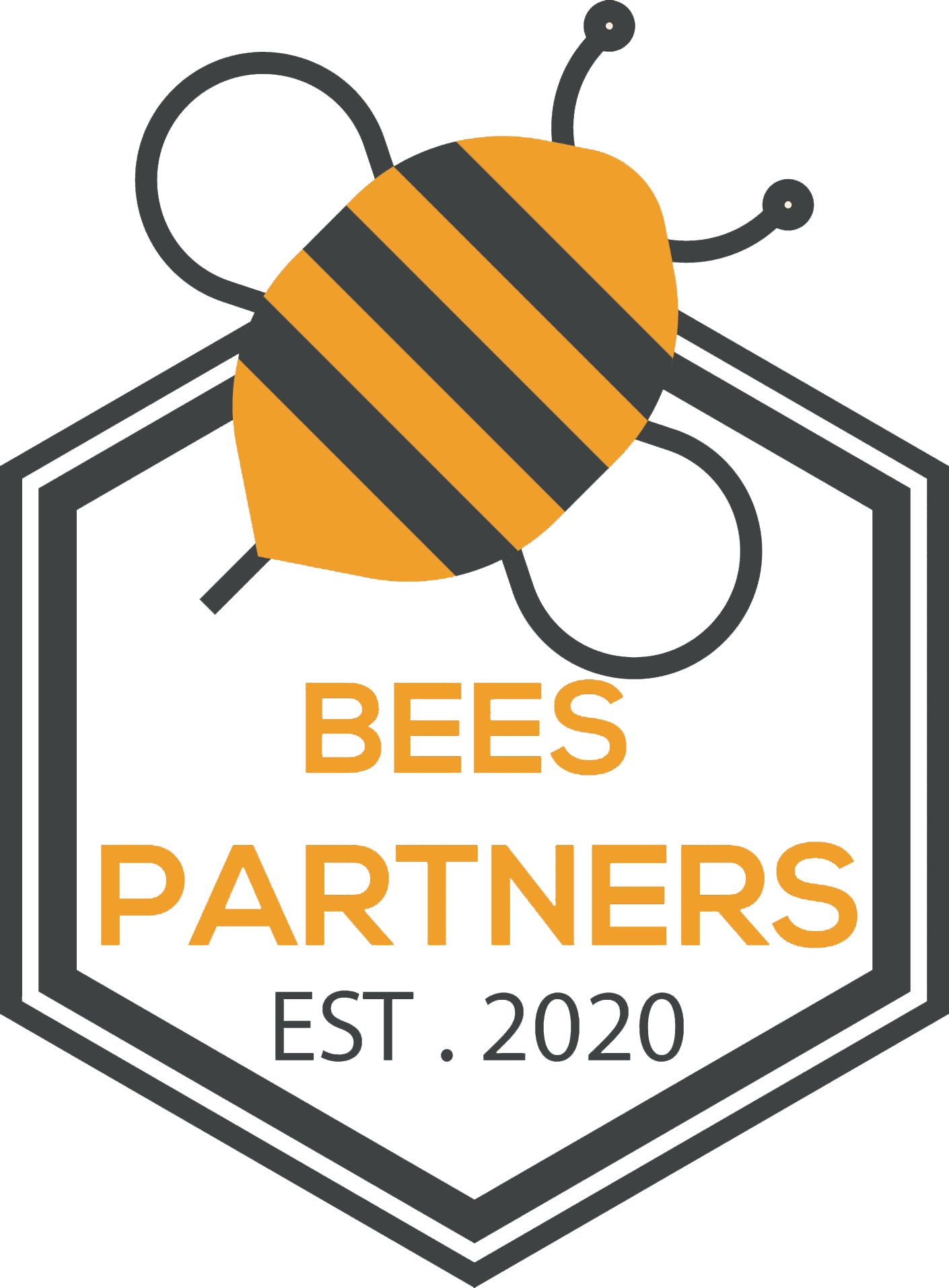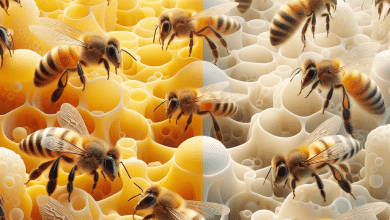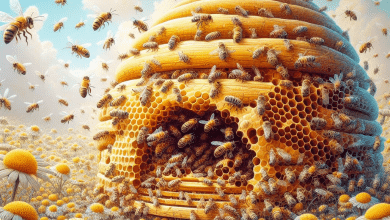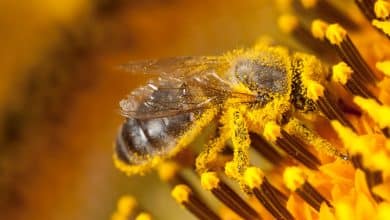Bee Hive Starter Kit vs. DIY Beekeeping Which is Better?
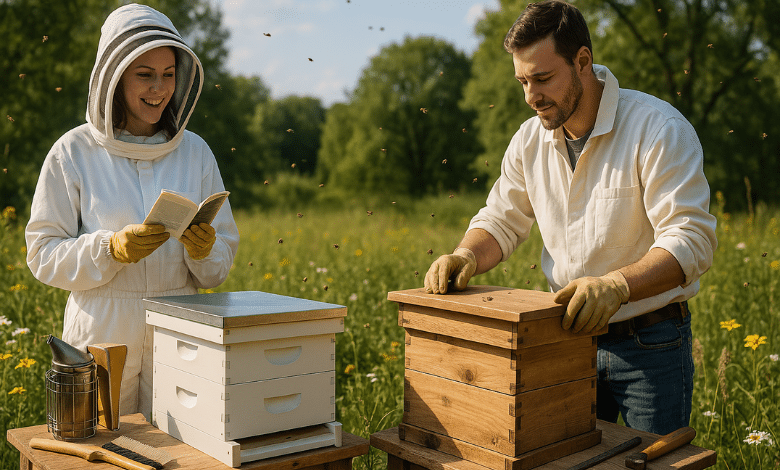
Getting started with beekeeping can feel like stepping into a new world filled with buzz and wonder. For aspiring beekeepers, the first step often begins with choosing the right equipment. Bee hive starter kits provide a comprehensive package that eases novice beekeepers into the craft. These kits typically include everything needed for a successful start — from the hive itself to essential tools and protective gear.
On the flip side, DIY beekeeping offers a more hands-on approach where beekeepers build their setups and gather materials themselves. This path can be rewarding for those who enjoy crafting bespoke solutions and learning from the ground up. However, it requires more time, effort, and a degree of research to ensure everything is set up correctly.
In recent years, many enthusiasts have harnessed the power of online platforms to share knowledge, tips, and personal experiences, making both starter kits and DIY beekeeping more accessible. For instance, countless blogs and forums cater to beekeeping hobbyists, offering advice on everything from hive assembly to honey extraction. Such resources can make a significant difference, especially for beginners navigating their way through their first year.
Benefits of Starting Beekeeping
Starting beekeeping can have numerous benefits, both personally and environmentally. Here are a few compelling reasons to embark on this sweet journey:
- Environmental Contribution: Beekeeping plays a crucial role in pollination, which supports agricultural production and biodiversity. By keeping bees, you contribute to the health of the ecosystem.
- Fresh Honey Supply: Enjoying honey straight from your backyard hive is a delicious perk. Home-harvested honey is often healthier and tastier than store-bought varieties, and you can experiment with different flavors depending on the local flora.
- Learning Experience: Beekeeping can be an incredible learning process. It offers practical lessons in biology, ecology, and even business if you decide to sell honey or other bee-related products.
- Personal Satisfaction: Watching your bees thrive and knowing you’re involved in this crucial ecological role can be immensely rewarding. Many beekeepers find joy in the routine of checking their hives and nurturing their colonies.
The journey into beekeeping—whether through a starter kit or DIY—promises not only self-discovery but also a chance to make a positive impact on the environment.
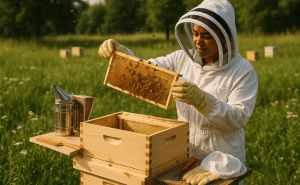
Contents
- 1 Understanding Bee Hive Starter Kits
- 2 Exploring DIY Beekeeping
- 3 Factors to Consider When Choosing Between a Bee Hive Starter Kit and DIY Beekeeping
- 4 Comparing Bee Hive Starter Kits and DIY Beekeeping
- 5 Making the Decision: Bee Hive Starter Kit vs. DIY Beekeeping
- 6 Is it better to buy a nuc or a package of bees?
- 7 How many beehives should a beginner start with?
- 8 What is the most profitable part of beekeeping?
Understanding Bee Hive Starter Kits
Components of a Bee Hive Starter Kit
When diving into the world of beekeeping, a bee hive starter kit serves as your essential toolkit for success. These kits are meticulously designed to cover all the basics needed to get your hive up and running. Here’s a breakdown of the typical components you can expect in a starter kit:
- Hive Body: Often made of untreated wood like pine or cedar, the hive body is the bees’ home. It usually comes with a bottom board, frames, an inner cover, and a telescoping top cover, providing ample space for the bees to thrive.
- Beekeeping Tools: The right tools make all the difference. Kits typically include:
- A bee brush, which gently removes bees from surfaces.
- A hive tool for prying apart frames and handling components.
- A smoker, which calms the bees during inspections.
- Protective Gear: Safety first! Good starter kits include a bee suit, veil, and gloves to reduce the risk of being stung while working near the hive.
- Foundation and Frames: These are essential for the bees to build their honeycombs. Some kits come with pre-waxed frames, which can help facilitate the bees’ work.
Investing in a complete starter kit ensures that you are well-prepared for your new venture and saves you the hassle of sourcing individual components.
Pros and Cons of Using a Bee Hive Starter Kit
Like any product, bee hive starter kits come with their advantages and some drawbacks. Understanding both sides helps you make an informed decision.
Pros:
- Convenience: Having all components in one package eliminates the guesswork of piecing together individual supplies. You can hit the ground running right away.
- Cost-Effective: These kits often present a more economical option than buying components separately, making them ideal for beginner beekeepers on a budget.
- Essential Tools Included: Most kits come equipped with the necessary tools, ensuring that you have what you need for hive inspections and maintenance.
- Easier Learning Curve: For beginners, a kit provides a structured approach to getting started with beekeeping, cementing fundamental knowledge about hive management.
Cons:
- Limited Customization: Some kits may not accommodate specific modifications preferred by more experienced beekeepers, which can feel restrictive as you grow into the hobby.
- Quality Variability: Not all kits are created equal. Some may include lower-quality components, potentially affecting longevity and your bees’ health.
- Overreliance on Kits: If you’re too reliant on starter kits, you might miss out on learning the intricacies of beekeeping equipment and hive management.
In the end, evaluating both the pros and cons can help new beekeepers find the best solution for their unique needs and circumstances in the beekeeping journey.
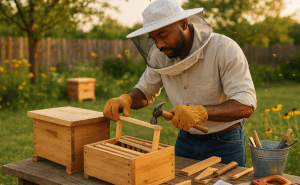
Exploring DIY Beekeeping
Advantages of DIY Beekeeping
DIY beekeeping can be an incredibly rewarding pursuit, especially for those who thrive on crafting and customization. Embracing this hands-on approach provides several advantages that make it an enticing option for many aspiring beekeepers:
- Personalization: One of the key benefits of DIY beekeeping is the ability to tailor your setup to your specific needs. Whether it’s creating custom hive designs or selecting unique materials, you have complete control over every aspect of your beekeeping venture.
- Cost Savings: Building your own hive and sourcing materials can often be more cost-effective than purchasing pre-packaged kits. By selecting your components, you can cherry-pick high-quality items that fit your budget and avoid unnecessary expenses on fancy tools or equipment.
- Educational Value: Engaging in DIY beekeeping is an excellent way to deepen your understanding of bee biology and hive management. As you build your equipment, you become more familiar with the intricate workings of a bee colony, leading to better decision-making when it comes to hive care.
- Satisfaction: There’s a profound sense of accomplishment that comes with creating something from scratch. Whether it’s successfully assembling your first hive or witnessing the bees thrive in your setup, these milestones foster a deep connection to your hobby.
Challenges of DIY Beekeeping
While DIY beekeeping has its perks, it’s essential to acknowledge the challenges that come along with the territory:
- Time and Effort: Building your own hive requires substantial time and dedication. It involves planning, gathering materials, and physically constructing the setup. For those with busy schedules, the added commitment may feel overwhelming.
- Learning Curve: For novices, the learning curve can be steep. Sourcing materials and understanding how to construct a functional hive may require research and experimentation. Without proper guidance, new beekeepers can struggle to gain the foundational knowledge they need.
- Quality Control: When undertaking a DIY project, the quality of your materials directly impacts the safety and health of your bees. Using subpar or inappropriate materials could lead to structural issues or even harm your bees, so careful selection and craftsmanship are crucial.
- Resource Availability: Depending on your location, sourcing materials or tools might be challenging. Some regions may not provide access to specific equipment, making it difficult for DIY beekeepers to gather everything they need.
Embarking on a DIY beekeeping journey can be both exciting and demanding. By weighing the advantages and challenges, individuals can make a more informed decision about whether this hands-on approach aligns with their preferences and goals. Ultimately, understanding and preparation are critical as you dive into the art of beekeeping.
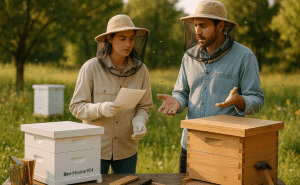
Factors to Consider When Choosing Between a Bee Hive Starter Kit and DIY Beekeeping
Cost Analysis
When embarking on the beekeeping adventure, one of the most crucial factors to consider is the cost. Both bee hive starter kits and DIY beekeeping have their financial implications, and understanding these differences will guide you in making the best choice.
- Bee Hive Starter Kits: Typically, starter kits come with a set price that includes all essential tools and materials. The upfront cost may seem high, but when considering the bundled items—like bee suits, smokers, and hive tools—the overall package can save you money compared to purchasing each item separately.
- DIY Beekeeping: On the other hand, going the DIY route allows for more flexibility in budgeting. You can control expenses by seeking out materials, building your equipment, and even using recycled items. However, this path could lead to unexpected costs if you need to replace any tools or materials due to poor quality or miscalculation.
In short, while a starter kit provides a clear cost structure, a DIY approach could either save or overspend, depending on how well you know your materials and the tools required.
Time and Effort Required
In addition to cost, you’ll need to consider the time and effort required by each method.
- Bee Hive Starter Kits: These kits are designed for beginners, often including comprehensive instructions which streamline the setup process. For busy individuals, starter kits offer a relatively quick way to initiate beekeeping. You can follow the steps outlined and have your hive operational with minimal hassle—perfect for those limited by time.
- DIY Beekeeping: While the effort involved in creating your hive can bring a sense of satisfaction, it requires a substantial amount of time. You’ll need to research, source quality materials, and assemble your equipment from scratch. This process can be rewarding but often involves a steep learning curve that could take longer before you’re ready to introduce your bees.
So, if time is of the essence, a bee hive starter kit may be a more suitable choice than the more labor-intensive DIY route.
Sustainability and Customization
Sustainability and customization considerations are increasingly important in today’s eco-conscious society.
- Bee Hive Starter Kits: Many starter kits are designed with the modern beekeeper in mind, ensuring quality and functionality. However, they might offer limited customization; you’re often stuck with prefabricated components that could restrict you if you want to modify your hive as your beekeeping experience grows.
- DIY Beekeeping: If you’re someone who loves to customize and create, DIY beekeeping could provide a strong sense of fulfillment. By designing your setup, you can integrate sustainable practices—such as locally sourced materials or bee-friendly features. Customizing can also allow for innovative solutions tailored specifically to your local environment and bee species.
Ultimately, weighing these various factors—cost, time, sustainability, and customization—can guide you in deciding which beekeeping path aligns best with your lifestyle and goals. Each route comes with its own set of advantages; the key is to choose the one that resonates most with your preferences.
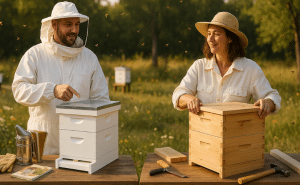
Comparing Bee Hive Starter Kits and DIY Beekeeping
Ease of Setup
When considering whether to embark on beekeeping through a starter kit or DIY setup, one of the primary factors to evaluate is the ease of setup.
- Bee Hive Starter Kits: Starter kits are often designed with beginners in mind, providing a straightforward and efficient setup process. Most kits come with clear instructions that guide you step-by-step, from assembling the hive to introducing your bees. This allows individuals with little to no experience in beekeeping to get their hives operational without feeling overwhelmed.
- DIY Beekeeping: On the flip side, constructing your own hive from scratch can offer more customization but typically requires a greater investment of time and energy. With DIY, you’ll need to gather materials, research effective designs, and learn how to assemble each component properly. While this path can be deeply satisfying, it can also be frustrating for new beekeepers who are already navigating the learning curve of bee care.
In essence, if you’re looking for a hassle-free introduction to beekeeping, a starter kit might be the way to go. However, if you’re excited about the hands-on experience of building a hive to your specifications, DIY could be your calling.
Maintenance Requirements
After the initial setup, ongoing maintenance is crucial, and this is another area where starter kits and DIY approaches differ significantly.
- Bee Hive Starter Kits: Generally, starter kits provide everything needed for basic hive maintenance, such as hive tools, protective gear, and sometimes even instructional materials that discuss regular inspections and colony health management. The easily accessible tools mean that beekeepers can quickly check on their hive’s status and implement care strategies.
- DIY Beekeeping: While DIY provides educational benefits by teaching you about each component of your hive, it also demands a proactive approach to maintenance. You’ll be responsible for monitoring the quality of the equipment you create, ensuring it holds up against the elements, and replacing any subpar materials. This can be an excellent learning opportunity, but it does require vigilance and time that some new beekeepers may not yet have.
Ultimately, both methods can lead to successful beekeeping careers, but how much time and effort you’re willing to invest will influence your decision.
Potential Harvest Yields
Last but certainly not least is the potential harvest yield of your beekeeping efforts. This aspect is often a critical motivator for many beekeepers.
- Bee Hive Starter Kits: With established designs and components built for efficiency, starter kits often lead to quicker and more productive honey production. Many kits are designed to provide ample space for bees to thrive, aiding in rapid colony growth. If you follow the provided guidelines, you may find yourself enjoying a satisfying harvest of honey in your first season.
- DIY Beekeeping: Harvest yields using a DIY approach can widely vary based on your materials, construction quality, and management skills. While you can absolutely achieve great yields with a DIY setup, it may take longer to reach that level of productivity if you’re not familiar with effective beekeeping strategies and practices. However, many DIY enthusiasts find creative ways to enhance their hives for optimal production, leading to unique harvest opportunities.
Both bee hive starter kits and DIY setups have their advantages when it comes to honey production. By assessing your goals and capabilities, you can select the option that best empowers your beekeeping journey.

Making the Decision: Bee Hive Starter Kit vs. DIY Beekeeping
Personal Preferences and Goals
Choosing between a bee hive starter kit and a DIY beekeeping approach often comes down to personal preferences and individual goals. Here are a few key aspects to consider based on your circumstances:
- Experience Level: If you’re a complete novice, a starter kit can make the process smoother by providing everything you need in one package. For individuals who enjoy hands-on projects and have some basic woodworking skills, a DIY setup might be more appealing as it allows for creativity and personalization.
- Time Commitment: Consider how much time you realistically have to devote to beekeeping. If your schedule is packed, a starter kit will save valuable hours that would otherwise be spent sourcing materials and assembling equipment. For those with more flexibility or a strong interest in learning, dedicating time to build your equipment can be a rewarding experience.
- Harvest Goals: Think about what you hope to achieve with your beekeeping journey. If you’re eager to produce honey quickly, starter kits, which are designed with efficiency in mind, may help you get established sooner. Conversely, if your primary goal is to learn about the sustainability of bee ecosystems, a DIY approach may better align with your educational aspirations.
Ultimately, aligning your choice with your personal interests and objectives can guide you to a decision that enhances your beekeeping journey.
Recommendations Based on Experience
Drawing from experiences shared by beekeeping enthusiasts and veterans can provide valuable insights as you navigate your decision. Consider the following recommendations:
- For Beginners: If you’re just starting, investing in a reliable bee hive starter kit can save you from the complexities of building your setup. Look into brands like Vivo Home or Hoover Hive, which come highly recommended for their quality and ease of use. A good starter kit often includes essential tools that might otherwise add to your total costs.
- Building a Hive: If you’re comfortable with woodworking or already have some materials on hand, creating your own hive can be fulfilling. As one experienced beekeeper noted, you can often find plans online or in books that guide you through the process. Just be sure to use quality components and understand that a well-crafted DIY hive can lead to greater satisfaction in your beekeeping experience.
- Combining Approaches: Some beekeepers opt for a hybrid approach. They might buy a starter kit but also enhance it with personalized DIY projects, such as building custom frames or hive covers. This can strike a satisfying balance between practicality and creativity.
In conclusion, as you weigh the pros and cons of a bee hive starter kit versus a DIY setup, consider your personal preferences, beekeeping goals, and the insights shared by others. Both paths offer unique advantages, and the right choice can set the stage for a fulfilling beekeeping journey.
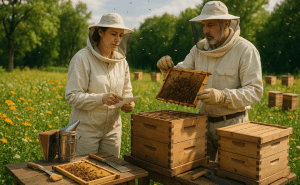
Recap of Key Points Comparing Bee Hive Starter Kits and DIY Beekeeping
As we’ve explored the intricacies of beekeeping, it’s clear that both bee hive starter kits and DIY beekeeping paths offer unique benefits and challenges. Here’s a concise recap of the key points to consider:
- Ease of Setup:
- Starter Kits provide all necessary components with clear instructions, making them ideal for beginners. They eliminate the stress of sourcing individual parts.
- DIY Beekeeping involves building equipment from scratch, which can be time-consuming and requires skill. While this method offers customization, it may overwhelm newcomers.
- Cost Analysis:
- Starter Kits often bundle tools and supplies at a competitive price. Investing in these can lead to savings when first starting.
- DIY can offer savings in the long run, especially if you have woodworking skills and access to affordable materials. However, initial costs for quality wood and equipment may vary, making a detailed cost assessment crucial.
- Maintenance Requirements:
- Starter Kits simplify ongoing maintenance with user-friendly tools designed for easy access and care.
- DIY Beekeeping requires ongoing vigilance and management of custom-built equipment, which can lead to deeper involvement in hive health.
- Potential Harvest Yields:
- With starter kits, you’re likely to see quicker harvests due to their efficient designs.
- DIY setups can yield great results too, but the learning curve might delay initial honey production.
Final Thoughts on Choosing the Best Option
Ultimately, the choice between a bee hive starter kit and DIY beekeeping boils down to your individual situation, preferences, and overall goals in beekeeping.
If you’re new to the hobby and want a straightforward entry, a starter kit presents a low-barrier opportunity to dive in. They are well-suited for those curious about beekeeping but unsure where to start. As you grow more comfortable, you can always introduce custom built elements like specialized lids or modified hive interiors.
On the other hand, if you have woodworking skills, enjoy crafting, and are eager to learn about bee behaviors and hive management, then the DIY approach might serve you well. Just ensure you account for the time and expenses associated with building your own hive and consider whether the learning experience aligns with your beekeeping aspirations.
Whichever route you choose, the key is to remain dedicated and open to learning. Beekeeping can be a rewarding endeavor, one that not only provides delicious honey but also fosters appreciation for these vital pollinators. Happy beekeeping!
Is it better to buy a nuc or a package of bees?
When deciding whether to purchase a nucleus colony (nuc) or a package of bees, there are several factors to consider that can significantly impact your beekeeping experience. Each option comes with its advantages and disadvantages, and your choice may depend on your specific goals, experience level, and the conditions in your area.
Understanding Nucs and Packages
Before diving into the decision, it’s important to clarify what each option entails:
- Nuc: An established colony that consists of a queen, workers, brood (eggs, larvae, and pupae), and food stores (honey and pollen). Because a nuc is already a functioning colony, it generally offers a quicker start as the bees are acclimated to their new environment and have a built-in food supply.
- Package: A package consists of a group of adult bees (usually around 3,000 to 5,000) and a queen that has not yet been accepted by the colony. It’s essentially a group of bees without frames or comb, meaning the bees have to start from scratch to build their home.
Pros and Cons of Buying a Nuc
Pros:
- Established colony: Since a nuc comes with a laying queen and brood, you’re likely to see quicker colony growth and stronger hive performance.
- Immediate food stores: Nucs have honey and pollen on hand, which helps the bees thrive immediately.
- Higher success rate for beginners: Nucs tend to be more forgiving for new beekeepers, as the colony comes pre-furnished and ready to go.
Cons:
- Higher initial cost: Nucs generally cost more than packages, which may be a factor for budget-conscious beekeepers.
- Potential for hidden issues: Some nucs may have frames that show wear or damage, which might affect their long-term performance.
Pros and Cons of Buying a Package
Pros:
- Cost-effective: Packages are typically less expensive than nucs, making them an attractive option for those just starting out.
- Custom shipping: You can often source packages from nearby areas, ensuring they’re acclimatized to your local climate.
Cons:
- Starting from scratch: With no brood or comb, packages require more time and resources to develop into a sustainable hive.
- Queen acceptance issues: The bees may take time to accept the new queen, potentially delaying establishment.
Conclusion: Making the Right Choice
In conclusion, if you’re looking for a quicker start and less uncertainty, a nuc is generally the better option, especially for novice beekeepers. You gain the advantage of working with a pre-established colony and can more rapidly see honey production.
However, if budget constraints are a primary concern and you’re prepared to invest time and effort into building the hive from the ground up, then a package might be a suitable choice. Ultimately, both options can lead to successful beekeeping projects, but considering your specific needs can help you make the best decision for your beekeeping journey. Happy beekeeping!
How many beehives should a beginner start with?
If you’re venturing into the world of beekeeping, one of the key questions on your mind might be: “How many beehives should I start with?” While many novice beekeepers consider beginning with a single hive, there are compelling reasons to consider starting with at least two. Let’s dive into the details.
The Case for Starting with Two Hives
Starting with two hives can provide several advantages that enhance your learning experience and improve your chances of success:
- Faster Learning: With two hives, you have the opportunity to compare their behaviors and performance. If one colony develops issues or behaves differently, you can identify potential problems sooner. This dynamic helps cultivate a more in-depth understanding of beekeeping practices.
- Better Chance of Honey Harvests: More hives can lead to higher overall honey production. If one colony struggles, the other may thrive, allowing you to still enjoy a harvest. Additionally, two hives can provide a backup to maintain a steady supply of bees if one hive fails.
- Extra Resources: In the event of a queen loss or other setbacks, you can utilize resources between the hives. For example, if one hive becomes queenless, you can introduce frames with eggs or brood from the other to help raise a new queen. This technique effectively reduces the risk of losing an entire colony.
- Swarm Control Options: Bees naturally swarm, and having multiple hives gives you flexibility when managing splits. If one hive swarms, you can use the resulting resources to start new colonies, enhancing your beekeeping operations.
Managing Multiple Hives as a Beginner
While the benefits of having two hives are clear, you might wonder how manageable they are for a new beekeeper:
- Time Commitment: Many beginners worry about the time commitment involved with managing multiple hives. However, regular inspections can be efficient. Spending about 15 minutes per hive during bi-weekly checkups allows you to stay on top of their health without overwhelming yourself.
- Space and Resources: Ensure you have adequate space for two hives, as bees need room to thrive. Additionally, check local regulations to confirm that beekeeping is permitted in your area.
- Increased Enjoyment: Beekeeping is a passionate hobby for many. Starting with two hives provides a sense of excitement. You might find yourself drawn to your hives frequently, eager to observe their activities and ensure their health.
In conclusion, while it is certainly possible to start with just one hive, beginning with two can enhance your beekeeping experience, increase your learning opportunities, and provide additional resources in case of unforeseen challenges. As you grow in your beekeeping journey, the flexibility and benefits of managing multiple hives will undoubtedly enrich your connection to these incredible pollinators. Happy beekeeping!
What is the most profitable part of beekeeping?
Beekeeping is often lauded not only as a rewarding hobby but also as a potential source of income. However, many newcomers to the field might wonder, “What is the most profitable part of beekeeping?” Let’s dive into the various avenues you can explore and uncover which of them might yield the best return on your investment.
Honey Production
One of the most common and widely recognized sources of income for beekeepers comes from honey production. Here’s a closer look:
- Market Demand: Honey is in high demand, especially locally sourced organic varieties. Many consumers are willing to pay a premium for honey that is produced in their community.
- Selling Potential: Depending on your location, a quart of honey can sell for around $22, while pint jars might go for $12. With good management practices, beekeepers can achieve a decent harvest, often starting with around 20 gallons or more from multiple hives.
- Branding Opportunities: If you can carve out a niche market, such as organic or specialty honeys, you could further enhance your profit margins.
Queen Rearing
Another lucrative option within beekeeping is queen rearing. By producing and selling your queens, you can tap into a steady stream of revenue:
- High Demand: Queens are essential for all beekeeping operations, making them a sought-after commodity. If you establish a reputation for quality queens, beekeepers will seek you out as a reliable source.
- Profitability: The profit margins can be significant, especially in regions where beekeepers struggle to find local queens. Some beekeepers identify a market niche by providing high-quality genetic stock.
Pollination Services
Pollination services can be another profitable avenue for beekeepers, particularly those with large numbers of hives:
- Industry Demand: Many agricultural sectors, including almond farming, rely heavily on honey bee pollination. By renting out your hives for pollination, you can create a steady income stream.
- Low Operational Costs: For beekeepers with established hives, the overhead for providing pollination services tends to be lower than honey production, as minimal extra labor is required for transporting the hives to the fields.
Beekeeping By-Products
Besides honey, beekeepers can generate income through various by-products:
- Beeswax: From candles to cosmetics, beeswax is a sought-after material. Products made from beeswax often fetch high prices—especially non-toxic alternatives to paraffin.
- Royal Jelly and Propolis: These by-products can be marketed for their health benefits and may tap into the growing demand for natural health products.
In summary, the most profitable part of beekeeping can vary based on individual circumstances, including local market demand, the number of hives you maintain, and how well you manage your colonies. For some, honey production will be the primary income source, while others may find that pollination services or queen rearing yield higher returns. Ultimately, exploring and diversifying these income streams can help maximize profitability and enhance your beekeeping adventure. Happy beekeeping!
Thank you for joining us in exploring the pros and cons of bee hive starter kits versus DIY beekeeping. Whether you’re a curious beginner or looking to refine your beekeeping journey, I hope this discussion has provided clarity on which option might be the best fit for you.
Remember, starting with a bee hive starter kit can ease the transition into beekeeping and provide you with all the essential tools and knowledge needed to thrive. Now, I’d love to hear from you! Which path do you think suits you best—starting with a kit or crafting your own setup? Share your thoughts in the comments below!
Important Notice on Content Rights
All rights reserved to Bees Partners © 2025. Copying, republishing, translating, or quoting more than 10% of this content is prohibited without prior written permission. For commercial or academic use, please contact: info@beespartners.dk.
Note: Limited quotation is allowed with clear source attribution and a direct link to the original article.
